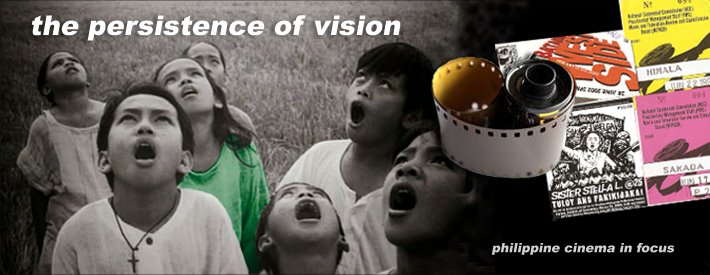
Maverick filmmaker Raya Martin groped for words in an impromptu speech before the start of the June 12, 2009 Philippine premiere of the film Independencia. 'Anong sasabihin ko?,' he muttered to his companions. The 24-year-old director may not be the best speaker out there, but he speaks volumes with his consistently excellent films.
Independencia is Martin's latest masterpiece. The 77-minute film is the second in a trilogy of films depicting the Philippines under colonial powers. Martin uses dominant film formats and popular entertainment fare during each period to frame his stories. The first film Maicling Pelicula Nang Ysang Indio Nacional utilized kundiman, theatre plays, and silent films to depict the Spanish period. This time around, Independencia employs newsreels and early 20th century studio films with false backdrops to show the destructive effects of the American colonization.
The Americans saw the potential of films as propaganda. They utilized films in their battles. Popular newsreels shown in the United States depicted American soldiers stopping an insurrection in the Philippines. The fighting was pictured as an uprising against an established government and not as a war between two countries. Most of the newsreels were just re-enactments showing American soldiers in good light.
Martin is a young man obsessed with early Filipino films. Most of his films deal with silent films, early 20th-century newsreels, and pre-war Filipino films. In this film, he recreates a movie that counters the jingoistic intent of an American newsreel. He indigenizes the movie’s format and content. The movie features three dark-skinned actors portraying characters fleeing from American troops. The characters speak in an old-fashioned local language. Local myths and superstitions are depicted in the movie.
The false backdrops of the movie riled two viewers seated near me. They complained about the obvious studio sets, which they perceived to be a result of the producers' stinginess. Another one blurted out 'The film is boring.' I expected this kind of reaction from them because I've overheard them saying it was their first time to see a Martin film.
The film Independencia is Martin’s most accessible film so far but it is still arty fare for casual moviegoers. The film is in black-and-white. The film is not talky but speaks a lot about heavy stuff such as colonialism, propaganda, and native resistance. The film does not feature a popular actor. Vilma Santos was originally set to play the mother but later backed out. In hindsight, Tetchie Agbayani is the right and better choice for the role. She is a morena and closely resembles Sid Lucero, who plays her son.
The theme of native resistance was enhanced with the film's utilization or visualization of lines from protest songs such as Marangal na Dalit ng Katagalugan. The song Bayan Ko dealt with an image of a caged bird crying and struggling to break free. The film featured several released birds flying straight to freedom. The last line of the country's national anthem was enacted at the stunning, blood-stained ending of the film.
Martin may have stammered in his introduction but he managed to greet the audience with 'Happy Independence Day!' It was a happy day too for independent films and independent filmmakers. His courageous film was a perfect ender to a whole day of local film screenings at the 14th French Film Festival at Shang Cineplex.
*picture taken here
**check out also this review




No comments:
Post a Comment